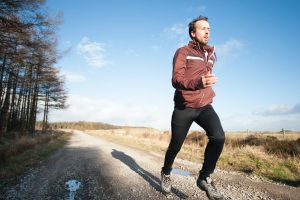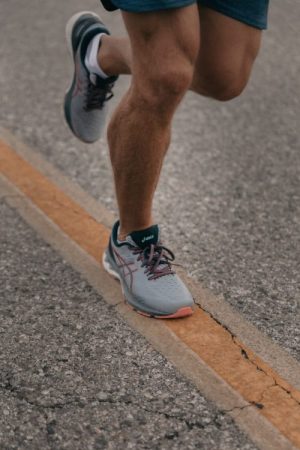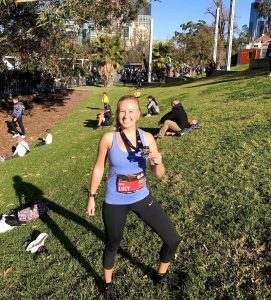Running takes on many forms!
You might notice when out for a run that there are many different running styles around! To understand what I mean, take a look at this short video: https://www.youtube.com/watch?v=Nu8FlpDSPl4
People have accomplished amazing running races with “technically-poor” running styles. So how can this be? There’s more than meets the eye when determining what causes running injuries.
In my running assessments, I look at the factors relevant for your individual running style. Along with optimising your technique, it enables me to create a personalised running plan. This is required to help you achieve your goals.
What is a running assessment?
A running assessment means getting to know you holistically. I look at your body’s “capacity” for running. From that, I determine how that relates to your current and future running demands. I then break down the running assessment into three parts:
1. Holistic discussion about you. This may include general physical health, past history work demands and mental health. I will also ask you about current injuries, your running to date and learn about your goals.
2. Physical assessment which tests muscle/joint function, flexibility, power and endurance. In addition, I will assess your motor control and joint range of movement.
3. Treadmill or outside running gait assessment. This information enables to me accurately:
- Understand and manage your injuries.
- Assist graded return to usual running levels and beyond.
- Target physical deficits with an tailored plan. This helps to increase robustness and resilience to injuries.
- Provide advice regarding running loads. This includes how to best manage them and how to increase to achieve your goals.
- Understand holistic load in relation to recovery and your usual life demands.
- Offer hands-on treatment where needed.
- Provide gait retraining (if the running injury is not able to be improved with other strategies)
- Discuss footwear and recognise when it is appropriate to refer on. Examples include a footwear fitting appointment, a Podiatry assessment or Dietitian intervention. Take a look at these websites which offer the above-mentioned services in the listed order.
The Running Company:
https://www.therunningcompany.com.au
Up And Running Podiatry:
http://www.upandrunningpodiatry.com.au
Chow Bella Nutrition:
https://portmelbournephysio.com.au/nutrition/

Changing someone’s running gait:
Gait modification can be a useful treatment for someone in pain. For example: a client who is in pain despite already having worked on their muscle strength/capacity and overall running load. Changing running gait works by altering the load through certain muscle groups.
Following this change, the painful structures are offloaded. There are some brilliant, low-risk (gentler shifting of load)
strategies to alter running styles. Evidence-based, these strategies are successful in assisting with common injuries.
There are also higher-risk strategies available to implement if required. Due to the significant shifts of load, it is important that you are sufficiently prepared. If you have no running-related pain/injuries, it is unwise to try and change your running style.
What are the common conditions that cause pain in running?
- Lower back pain.
- Hip/glute pain. This could be greater trochanteric pain syndrome, glute tendinopathies or piriformis syndrome.
- Back of thigh pain (often hamstring injuries).
- Knee pain. This could be patello-femoral pain, ITB friction syndrome, a meniscal tear or osteoarthritis.
- Shin splints (medial tibial stress syndrome).
- Calf pain (This could be an Achilles or peroneal tendinopathy.
- Plantar heel pain (often plantar fasciitis).
Remember, running is worth it and has many positive effects on your health and wellbeing. Did you know that running can prevent at least 35 chronic diseases? Furthermore, at least 26 chronic conditions can be treated with running. Our systemic inflammation is reduced when we run and, last but not least, being a runner can prolong your life! Even if you do just one fifty minute run a week. Regardless of whether you are a smoker, running is an independent factor that prolongs your life.
One question I am often asked: does running damage your knees?
3.5% of recreational runners who run 3-5 x week get hip and knee osteoarthritis (OA). OA is
prevalent in 10.2% of non-runners and 13.3% of competitive runners (serious competitive level and running huge distances). Recreational running is therefore proposed to have a protective effect against osteoarthritis!
~ Lucy Bowden
Physiotherapist
Book to to see Lucy for a running assessment via our online booking system here: https://portmelbournephysio.com.au/book-online-now/
Struggling for exercise motivation post-lockdown? Let Alex’s blog inspire you! https://portmelbournephysio.com.au/exercise-motivation/
Learn more about top strengthening exercises for runners: https://portmelbournephysio.com.au/top-strengthening-exercises-for-runners/
Tips for returning to running part 1: https://portmelbournephysio.com.au/tips-for-return-to-running-part-1/
Tips for returning to running part 2: https://portmelbournephysio.com.au/tips-for-return-to-running-part-2/
References:
Alentorn-Geli et al., 2017. Alentorn-Geli, E., Samuelsson, K., Musahl, V., Green, C., Bhandari, M., & Karlsson, J. (2017). The Association of Recreational and Competitive Running With Hip and Knee Osteoarthritis: A Systematic Review and Meta-analysis. Journal Of Orthopaedic & Sports Physical Therapy, 47(6), 373-390. doi: 10.2519/jospt.2017.7137


